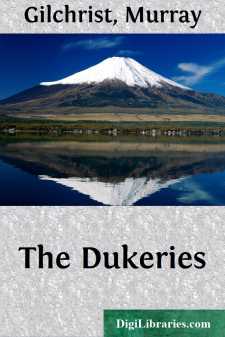Categories
- Antiques & Collectibles 13
- Architecture 36
- Art 48
- Bibles 22
- Biography & Autobiography 813
- Body, Mind & Spirit 142
- Business & Economics 28
- Children's Books 17
- Children's Fiction 14
- Computers 4
- Cooking 94
- Crafts & Hobbies 4
- Drama 346
- Education 46
- Family & Relationships 57
- Fiction 11829
- Games 19
- Gardening 17
- Health & Fitness 34
- History 1377
- House & Home 1
- Humor 147
- Juvenile Fiction 1873
- Juvenile Nonfiction 202
- Language Arts & Disciplines 88
- Law 16
- Literary Collections 686
- Literary Criticism 179
- Mathematics 13
- Medical 41
- Music 40
- Nature 179
- Non-Classifiable 1768
- Performing Arts 7
- Periodicals 1453
- Philosophy 64
- Photography 2
- Poetry 896
- Political Science 203
- Psychology 42
- Reference 154
- Religion 513
- Science 126
- Self-Help 84
- Social Science 81
- Sports & Recreation 34
- Study Aids 3
- Technology & Engineering 59
- Transportation 23
- Travel 463
- True Crime 29
The Dukeries
by: Murray Gilchrist
Description:
Excerpt
WORKSOP AND THE MANOR
Although within the last twenty-five years Worksop has suffered many changes, unfortunate enough from an æsthetic point of view, the Dukeries end of the principal street still suggests the comfortable market town in the neighbourhood of folk of quality. The only relic of notable antiquity is the quaint inn, known as the Old Ship—a building with projecting upper story and carved oaken beams that might have been transported from Chester.
The twin-towered Priory Church, a gatehouse of singular interest, and some slight, gracefully proportioned ecclesiastical ruins are the main features of interest. The Priory was founded by William de Lovetot, and used by the canons of the order of St. Augustine. Great men were buried there, notably several chiefs of the Furnival family, who had for town residence Furnival's Inn in Holborn. The interior of the church contains some excellent round and octagonal pillars, and one or two ancient effigies. The walls are coated with stucco, which detracts considerably from the beauty of this handsomely proportioned building. One of the most interesting things to be seen is a piece of a human skull, pierced with an arrowhead. This hangs to the left of the doorway by which the vestry is reached. There is a weird superstition concerning the moving of this relic.
Near by is the ruined chapel, erected about the middle of the thirteenth century. It was dedicated to the Virgin Mary, and in olden times must have blazed with gorgeous colours. The roof has fallen; little remains of its former beauty save the lancet windows. The double piscina and the sedilia are still in fair preservation, and we are shown the round holes in the stonework once filled with the pegs of the canons' oaken seats.
In the churchyard are a few quaint epitaphs for such as delight to dwell upon the virtues of the forgotten dead. The Priory Gatehouse at the farther end is perhaps one of the most interesting buildings of its kind in existence. The stonework is of soft grey, and the roof chiefly of well-coloured tiles. A roadway about fifteen yards in length passes through the building; the original ceiling of oaken beams with graceful braces is still in good condition. Above this was the Hospitium, or guest chamber, where may be seen the hooded chimney-piece and the hearth before which old-time travellers rested o' nights and told tales that Chaucer might have loved, before retiring to the smaller chambers, to sleep heavily after the good cheer provided by their priestly hosts. In front of this relic stands the old market cross; and near by, until within the nineteenth century, were the stocks for vagrants and refractory townsmen.
Camden tells us that in his time Worksop was "noted for its great produce of liquorice, and famous for the Earl of Shrewsbury's house, built in our memory by George Talbot, with the magnificence becoming so great an Earl, and yet below envy". In Park Street, not far from the Priory Gateway, is one of the entrances to the Manor Park. The trees still remaining are not noteworthy in the matter of size, with the exception of a few cedars and beeches near the terrace of the house. As one approaches, the Manor Hills, gently sloping and well wooded, with heather-covered clearings, may be seen to the left. As for the house itself, the garden front of to-day, without being of great architectural interest, has a very pleasant air of unpretentious comfort and brightness. There is a flower garden whose beds are edged with box and yew. The chief object of note is a long and high wall, probably a portion of the ancient house; this is somewhat dignified with its worn coping, whereon stand various urns the carving of which time has softened. From the terrace one looks down on the sloping park with its mere, and scattered trees, and graceful groups of young horses....


